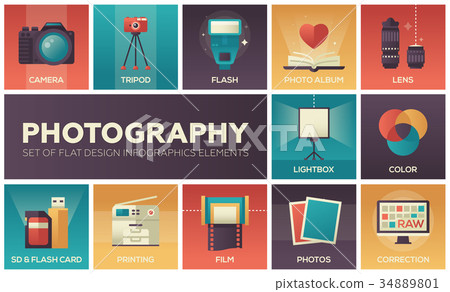Change Your Photography By Understanding Lights Methods That Can Raise Your Pictures-- Uncover The Typical Pitfalls That Could Be Holding You Back
Change Your Photography By Understanding Lights Methods That Can Raise Your Pictures-- Uncover The Typical Pitfalls That Could Be Holding You Back
Blog Article
Personnel Writer-Rogers Covington
As a professional photographer, you recognize that illumination can make or damage your photos. Comprehending the subtleties of both all-natural and artificial light is essential for catching the mood and clarity you aim for in your job. Whether you're going after the best gold hour glow or tweak your artificial arrangements, grasping these components can boost your digital photography dramatically. However there prevail risks that several overlook, and identifying them can transform your approach to every shoot. Let's discover what you may be missing and just how it can impact your results.
Recognizing All-natural Light
Comprehending natural light is important for any kind of digital photographer wanting to improve their job. It's the structure of fantastic photography, affecting state of mind, tone, and quality. When you fire outdoors, take notice of the moment of day. The gold hour-- quickly after daybreak and before sunset-- uses soft, cozy light that can change common scenes into spectacular photos.
Don't take too lightly the power of overcast days. Cloud cover diffuses sunshine, developing a soft, even light that's best for pictures and macro photography. You'll find colors pop in this kind of lighting without harsh darkness.
Placing matters, too. Constantly consider your subject's positioning to the light. If the sun's behind your topic, you might wind up with a shape, which can be dramatic however mightn't be what you want. Conversely, direct sunlight can produce uncomplimentary shadows.
Try out angles; often, transforming your point of view can produce remarkable results. Use all-natural reflectors, like water or sand, to bounce light onto your subject, adding dimension.
Mastering Artificial Light
Grasping man-made light is vital for professional photographers that want to take their skills to the following degree. Whether you're using speedlights, workshop strobes, or continuous lights, recognizing exactly how to adjust these sources can considerably improve your pictures.
Begin by acquainting on your own with the basics of light high quality, direction, and shade temperature level. Explore try this website like softboxes, umbrellas, or grids to control the soft qualities or cruelty of the light.
You'll discover that soft light often produces flattering results, while harsher light can include drama and depth. Do not shy away from darkness; they can enhance the three-dimensionality of your subjects.
Pay attention to the positioning of your lights. https://www.liveinternet.ru/users/mcmanus_allred/post509027284 positioned as well near your topic can develop uncomplimentary outcomes, while as well far away can cause an absence of information. Use https://postheaven.net/reggie0618glenn/exactly-how-to-develop-a-digital-photography-profile-that-stands-apart or your camera's histogram to guarantee you're subjecting correctly.
Lastly, remember that synthetic light can be combined with ambient light for creative effects. Balancing these sources might take practice, but once you master it, your digital photography will absolutely beam.
Strategies for Various Scenarios
When you step into different capturing scenarios, adapting your lights strategies is crucial for capturing the very best photos. For exterior portraits, use the golden hour-- morning or late afternoon light-- to soften darkness and boost skin tones.
If it's an extreme noontime sunlight, take into consideration making use of a reflector to jump light back onto your topic or look for shaded areas for an extra also direct exposure.
In low-light circumstances, like interior events, increase your ISO and make use of a broad aperture to allow in more light. A tripod can assist remove video camera shake, permitting longer direct exposures without obscuring.
If you're contending evening, explore off-camera flash to produce dynamic illumination and depth in your images.
For item digital photography, use diffused illumination to stay clear of harsh representations. Softboxes or light tents can assist attain this impact.
When photographing landscapes, consider the direction of light and time of day, as it can considerably change the mood of your shot.
Always prepare to change your setups and positioning based upon the scenario, as adaptability is vital to mastering illumination in digital photography.
Final thought
Finally, understanding lighting is key to raising your photography skills. Accept natural light's appeal throughout golden hour, and do not shy away from experimenting with synthetic light techniques. By adjusting your approach to different situations, you'll record magnificent images that resonate with feeling and clarity. Keep in mind, the appropriate illumination can transform an ordinary shot into something remarkable, so keep practicing and improving your understanding of both all-natural and man-made light. Pleased shooting!
